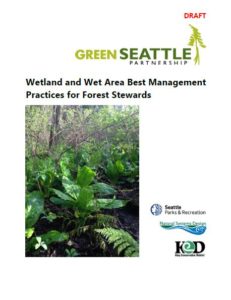Restoration Resources
STEP TWO
KNOW
YOUR
SITE
Site Planning
Trails
The Seattle Parks Trails Program creates and maintains miles and miles of trails that run through our natural areas. Forest Stewards have to take trails into consideration when doing their restoration work, specifically around planting. You can read the most recent Forest Stewards Trail Corridor Best Management Practices to learn more.
Habitat
Forest Parkland Restoration Planning related to Breeding Birds in Seattle
Impacts of Habitat Restoration and the Status of Avian Communities in Seattle City Parks
Native Pollinator Habitat Restoration Guide (EarthCorps)
Washington Native Pollinator Plant Lists (Matthew Schwartz) (it is a workbook, so look for tabs at the bottom for different habitat types)
Washington Native Pollinator Plant Glossary (Matthew Schwartz)
STEP THREE
KNOW
YOUR
PLANTS
Plant Identification
Need help identifying a native plant?
Burke Museum Herbarium Image Collection
Green Cities Plant Guide
Native Look-a-likes:
Identifying native and invasive maples
Distinguishing between giant hogweed, poison hemlock, and cow parsnip
Identifying native and invasive cherry
Identifying native and invasive hawthorns
Winter Twig Identification
Native Plant Winter Twig ID Booklet
Plant Selection
Plant Propagation
Invasive Pest in Northwest Forests
Resources for identifying and reporting Asian Longhorn Beetle(ALB)
Invasive and Noxious Weed Management
Seattle Parks Comprehensive Target Weed List
Seattle Parks Woody Invasive Target List
King County Noxious Weed Resources
Are you a Forest Steward with an active restoration project that has invasive trees or plants that need herbicide treatment? Fill out the herbicide request form to get it addressed by professional crews.





